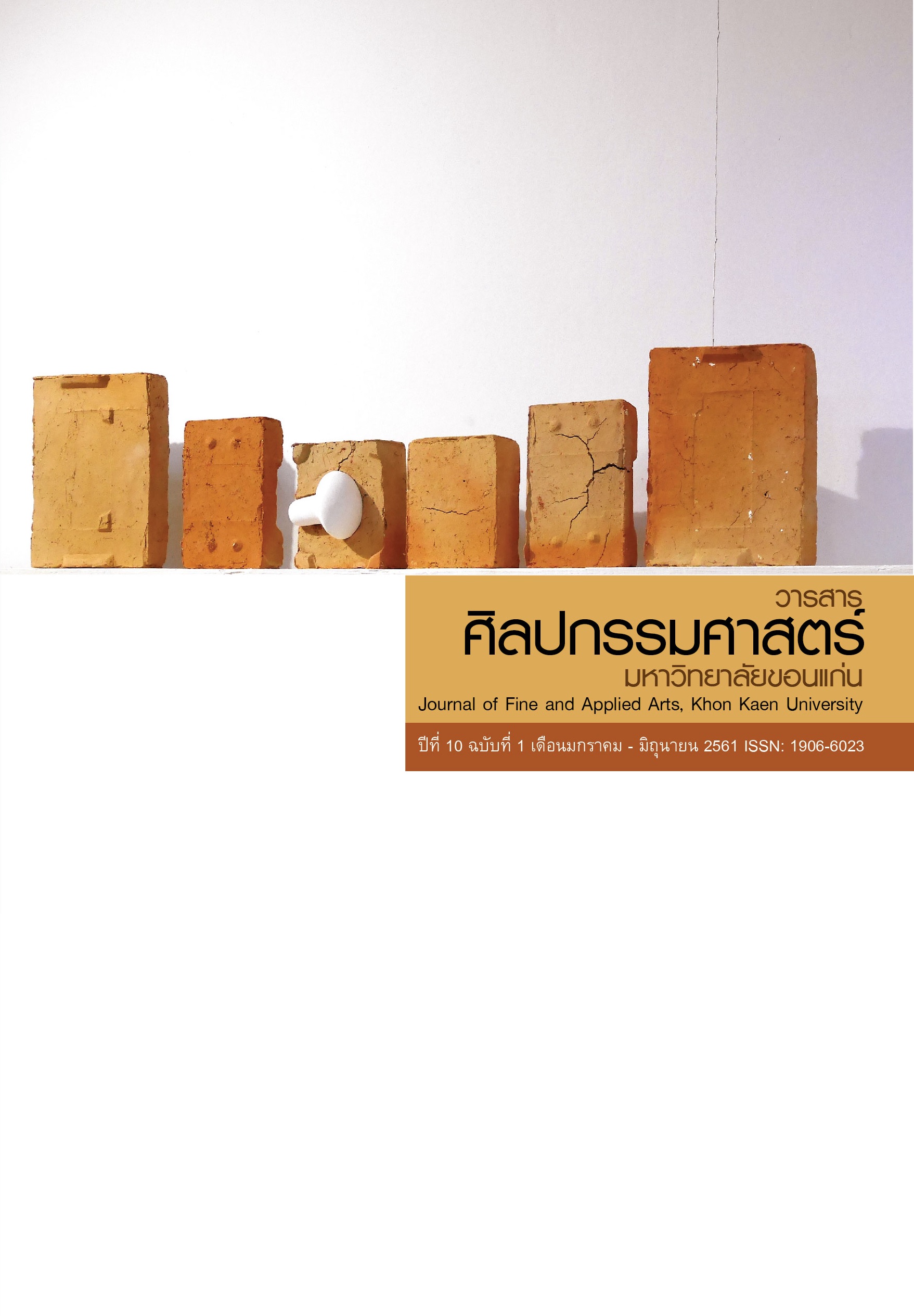Mor Lam Phuen
Main Article Content
Abstract
The purpose of this research study entitled Mor Lam Phuen was to investigate the background of Mor Lam Phuen and its lyric and melody based on data collected from publications and in the field through observations of and interviews with Mor Lam singers, experts, musicians and spectators. The findings were presented in the form of descriptive analysis.
Results of the study indicated that, in terms of background, Mor Lam Phuen can be classified into the classical period (beginning), classical period (later), and current period. During the classical period (beginning), the performance started at 9.00 p.m. and continued until dawn. There was no actual stage, but only a single mat spread on the ground. The spectators also sat on their mats. There were no electrical appliances to amplify sounds, but only the light from “torch.” Before beginning the performance, the singers had to perform Wai Khru ceremony to pay homage to and inform their teachers and sacred spirits around that area in order to make the performance a success. Mor Lam singers’ primary objective of this ritual was to boost their confidence before beginning the performance. After Wai Khru ceremony, performance started. During the classical period (later), the performance started at 9.00 p.m. and continued until dawn. Before starting the performance, Wai Khru ceremony was also performed backstage just like in the beginning period. After the Wai Khru ceremony, the performance began. During the current period, the performance also started at 9.00 p.m. and continued until dawn. It could be seen that during this period, songs were sung in combination with the music of Mor Lam artists.
In terms of lyric and melody, Mor Lam melody was an easy listening one accompanied by khaen (reed mouth organ) with high and low pitches reciting the poem, but the end sound was the same as the beginning. Ad-lib was usually long. However, ad-lib was rarely used since a Mor Lam artist had to make sure that he/she recited every word in the poem, which was usually long, and had to be sung continuously without a break. With regards to breathing, since the lyric or poem was very long, Mor Lam artists could hardly take a full breath so they had to repeat the words in order to take a breath before continuing with the singing. Regarding pronunciation of consonants, although there were a lot of words in Mor Lam poem or lyric, but every word had to be pronounced clearly and fully and ad-lib might be added for some words.
Article Details
Content and information in articles published in the Journal of Fine and Applied Arts of Khon Kaen University is regarded as the opinion and sole responsibility of the author(s) directly; therefore, editors are not obliged to agree to or share any responsibility with regard to the content and information that appears within these articles.
All articles, information, content, image, etc. that have been published in the Journal of Fine and Applied Arts of Khon Kaen University is the copyright of the Journal of Fine and Appllied Arts of Khon Kaen University. Any person or organization who wishes to distribute all or parts of the articles for further dissemination or other usage must first receive permission from the Journal of Fine and Applied Arts of Khon Kaen University before proceeding to do so.
References
จารุวรรณ ธรรมวัตร. 2543. ภูมิปัญญาอีสาน. อุบลราชธานี : ศิริธรรมออฟเซ็ท.
จารุวรรณ ธรรมวัตร. 2530. คติชาวบ้าน. มหาสารคาม : มหาวิทยาลัยศรีนครินทรวิโรฒมหาสารคาม.
บุญเดิม พันรอบ. 2528. สังคมวิทยา มานุษยวิทยา. กรุงเทพฯ : ศิลปาบรรณาคาร. หน้า 248.


